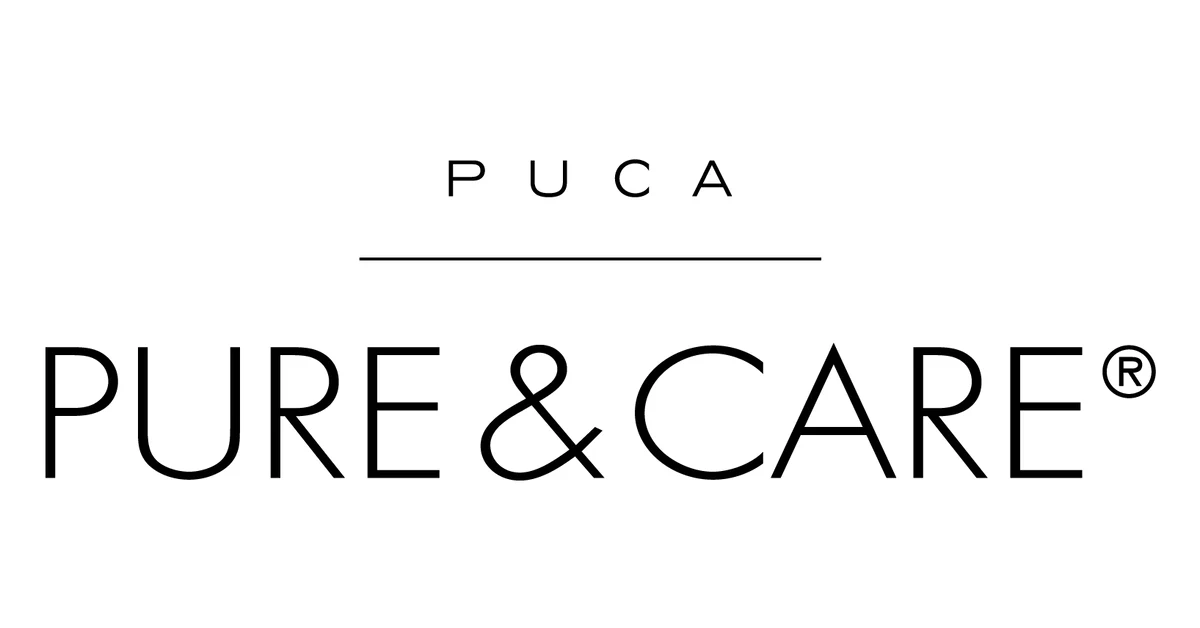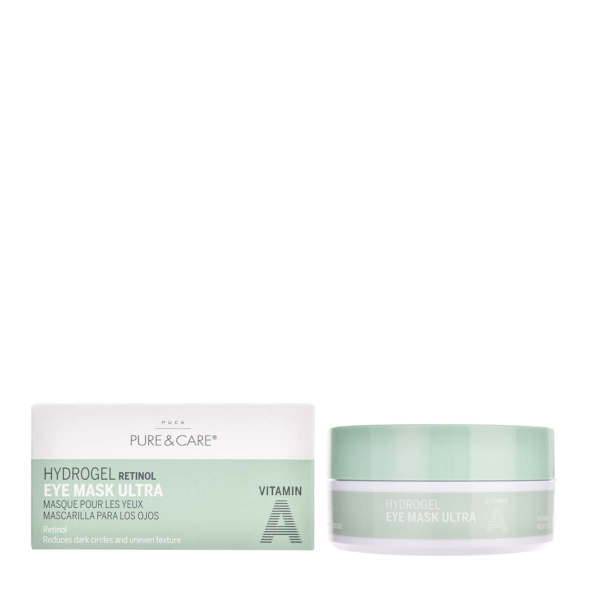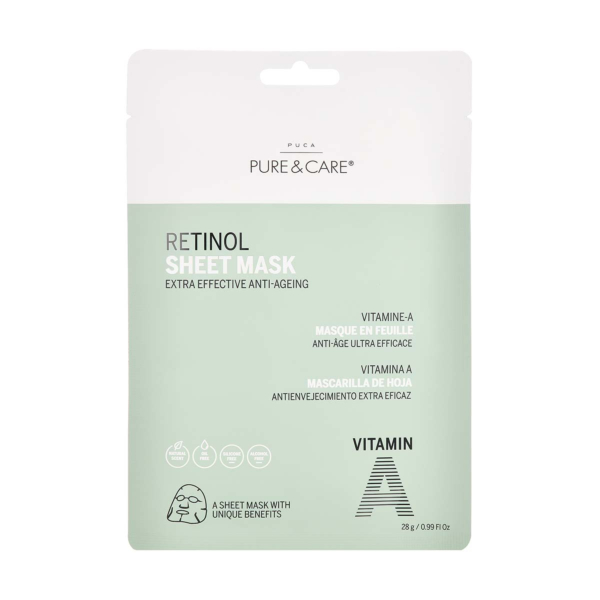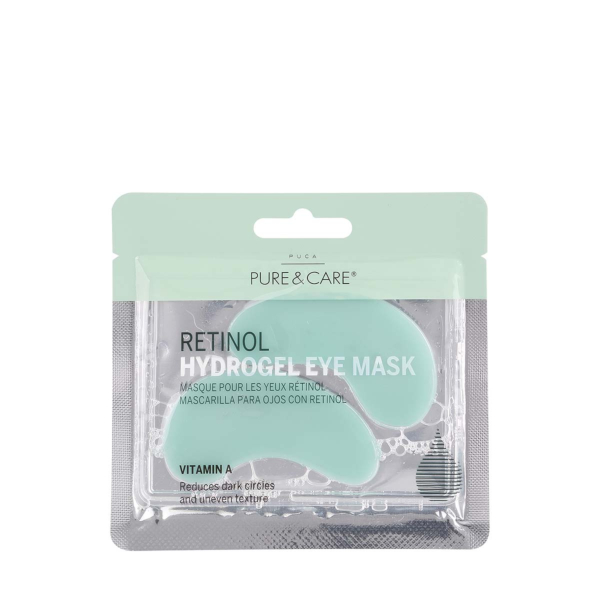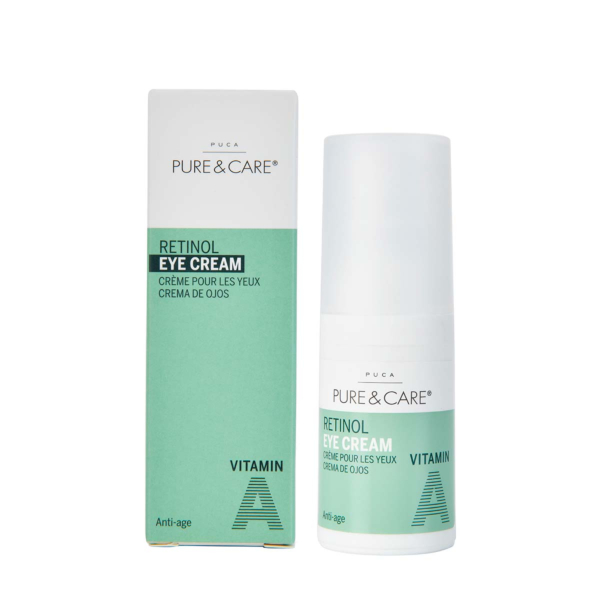Vitamin A - Retinol
Our Retinol range contains pure Retinol
Retinol serum contains 7.5% Retinol KS68 (2.2%), the pure Retinol is 0.165%.
Retinol Night Cream contains 2.5% Retinol KS60 (10%), the pure Retinol is 0.25%
Retinol Day Cream contains 1% Retinol KS60 (10%), the pure Retinol is 0.1%
Retinol Eye Cream contains 1% Retinol KS60 (10%), the pure Retinol is 0.1%
Further down the page you will find an in-depth review of Retinol and its properties.
PRODUCTS WITH RETINOL
ABOUT RETINOL
Retinol products for day use contain a small amount of UV protection. It is recommended to use a SPF +15 sunscreen with the product, because retinoids can increase the skin’s sensitivity to sunlight. The product may be irritating to the skin during the adjustment period. Therefore, we recommend starting with the day cream, and adding serum and eye cream after a few days. Once the skin has become accustomed to the retinol, i.e. you feel no discomfort, you are ready to start using retinol cream for night use. During the adjustment period, you can expect the skin to be reddish and slightly irritated. If this does not go away after a few days, you should consider whether you should continue to use retinol in your skin care routine.
- Retinoids reduce fine lines and wrinkles by increasing the production of collagen. They stimulate the production of new blood vessels in the skin, which improves skin tone while even out age spots and soften the skin, improve the skin barrier and thickness.
- Retinol inhibits the formation of free radicals, blocks active oxygen damage and improves the skin’s anti-ageing abilitie. Daily use of retinol can reduce the ageing effect of stress-related adrenaline in the skin. In addition, retinol can renew the epidermis (the top layer of the skin) after external stress, and provide fullness to the dermis (the next layer of skin). The effect of this is that the skin is smoothed out and gets fullness from the inside, while the skin’s elasticity is increased.
- Anti-aging improvements will not be visible until regular use has continued for at least 4 weeks. Retinol has been shown to have a positive effect on acne-prone and acne-scarred skin.
- Retinol in skin care is a long-term routine to reduce wrinkles and signs of aging. After 9 months of using retinol, the fine lines around the eyes have been significantly improved
For optimal effect store your Retinol products in a dark place. Retinol is unstable and degrades easily when exposed to air and sunlight.

Test performed with 0.1% Retinol
RETINOIDS
Retinoids includes vitamin A and compounds similar to vitamin A. Vitamin A is a group of compounds which are essential for many functions in the body. Depending on age, sex, and pregnancy human need somewhere between 0.35 and 1.1 g of vitamin A per day. The focus here will be on Retinoids and the skin.
Retinoids is a large group of biologically active substances which primarily perform their effect by influencing the genome. This impact takes place by means of specific retinoid receptors, of which there are two types: Retinoic Acid Receptors (RAR) and Retinoid X Receptors (RXR).
At the cellular level, Retinoids can stimulate cellular activity in a variety of skin cells such as keratinocytes, fibroblasts, melanocytes and Langerhans cells. This can result in positive effects such as increasing the protective function of the epidermis, reducing water loss (and thus dry skin), protecting collagen from degradation, and inhibiting the activity of certain enzymes responsible for the degradation of the extracellular matrix. In addition, some (primarily in vitro and animal experiments) studies have shown that some Retinoids have an antioxidant and anti-bacterial effect.
Many Retinoids are researched and have shown positive effects in relation to e. g. wrinkles, pigment spots and impure skin – and some side effects such as skin irritation and possible endocrine disrupting effect. As with everything else, it is about finding the right balance.
There are both natural and synthetic retinoids and they are often divided into three generations of retinoids based on their molecular structures.
Retinoids are usually fat-soluble compounds with a ring-shaped structure, on which there is a chain with alternating double and single bonds between the C atoms. At the end of the chain is the structure that most often makes the difference between the most well-known Retinoids.
On their own, retinoids are not always particularly stable, which is why they are often stabilised in relatively complex raw materials by the raw material manufacturer – where the retinoid content itself is typically between 1% and 10%. This means that 5% of a cosmetic product’s composition might be a retinoid raw material, for example, meaning that the actual proportion of "pure" retinoid in the finished product is 0.05% if the pure retinoid accounts for 1% of the retinoid raw material.
Manufacturers differ in how they communicate the amount of retinoid in their products – some state the percentage of the raw material (including solvents, stabilisers and retinoid) and others state the percentage of "pure" retinoid. In some cases, the raw material is also formulated in a special way to improve skin penetration and/or in a way that ensures a slower release and thus less risk of unwanted side effects.
It is often recommended to avoid the sun or to use sunscreen in conjunction with retinoid use – primarily because retinoids can be unstable in sunlight. However, there are also studies which show that some retinoids have a UV-filter effect as they absorb UV light.
Retinoids – including retinol and retinol derivatives – are not suitable for children. Experience shows that young skin in particular can react negatively to excessive use of retinoids. It is important to be aware of your skin's reaction and to stop using the product if your skin reacts negatively. Retinoids should not be used on sun-damaged and irritated skin.
We do not recommend the use of our retinol products on children under 14 years of age. For young people over 14 years of age, we recommend starting slowly and paying extra attention to how the skin reacts. Retinol products are generally targeted at mature skin, or skin that responds positively to retinol.
Are you pregnant and unsure whether you can use Retinol?
Read more about pregnancy and skin care on our blog here.
Below, the most common Retinoids are reviewed.
RETINOIC ACID
Retinoic Acid may also be known as Tretinoin (the all–trans form of Retinoic Acid). The substance group at the end of the chain is here an acid group. The substance is banned from use in cosmetics in the EU (can be used in medicines) and is quite irritating to the skin – even at very low concentrations. Studies suggest that it is precisely this substance that is the primary cause of the side effects of retinoids in skin products. Retinoic Acid can be converted in the body to other retinoids (Oxoretinoids), which have not yet been studied to great extent.
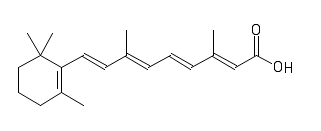
Illustra 1. Retinoic Acid
RETINOL
Retinol or vitamin A1 alcohol has an alcohol group at the end of its chain structure and was assessed by the SCCS (European Scientific Committee on Consumer Safety) in 2016 and again in 2022 (where retinyl acetate and retinyl palmitate were also assessed). The conclusion from 2022 was that retinol is safe to use at a percentage of up to 0.05% in body lotions and up to 0.3% in other leave-on products such as face creams and rinse-off products. This restriction is expected to be passed into law during the course of 2024/2025, along with a requirement that products containing retinol (and/or retinyl acetate and retinyl palmitate) must state that the product contains vitamin A-related compounds that contribute to your daily intake of vitamin A.
Retinol can (depending on, among other things, the product formulation in which the molecule is) reach the lower layer of the epidermis, where there are living cells and where the cells divide and to a lesser extent it can reach the dermis and to a much lesser extent the subcutis. In the skin / body, Retinol can be (reversibly) converted (oxidized) to Retinal which can then be (irreversibly) converted (oxidized) to Retinoic Acid – the primary active form. Retinol can also be esterified with a form of fatty acid to form Retinyl esters. Retinol and Retinyl esters make up most of the natural forms of retinoids found in the body.
Retinol has a less powerful effect compared to Retinoic Acid – and minor side effects.
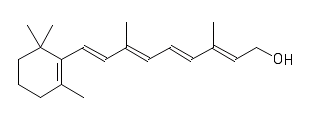
Illustration 2. Retinol
RETINAL
Retinal is also known as Retinaldehyde and is very similar to Retinol, but instead of an alcohol group (-OH) it is an aldehyde group – which chemically is usually more reactive than e.g. an alcohol group and is crucial for the receptor-independent effect of Retinal, that some studies have shown (anti-bacterial effect).
In the body, Retinal is converted to Retinol (reversible) or to Retinoic Acid (irreversible). Retinal applied to the skin will be converted relatively quickly to Retinol and from there to Retinyl esters and will to a lesser extent be oxidized to Retinoic Acid. In addition, enzymes in the body’s intestines can convert (ingested) carotenoids into Retinal.
Retinal appears to be less well known in skin care, but according to studies it has a good effect (in some areas slightly better than Retinol) and apparently about as mild as Retinol in terms of unwanted side effects.
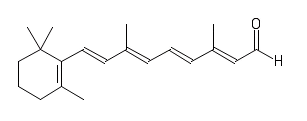
Illustration 3. Retinal
RETINYL ESTERE
These compounds are called retinoids and include retinyl esters, where an acid is attached to retinol to form an ester bond, making the molecule more stable. Examples of retinyl esters include both retinyl palmitate and retinyl acetate, which were included in the 2016 and 2022 SCCS assessments with the same conclusion. Equally, these two retinyl esters are expected to be written into legislation with restrictions of max 0.05% measured as retinol equivalent in body lotions and max 0.3% measured as retinol equivalent in other leave-on and rinse-off products, along with the requirement to state that these products contain vitamin A-related compounds that contribute to your daily intake of vitamin A.
Retinyl esters often have a less potent effect and present a lower risk of side effects since they have a longer "pathway" compared to the more active forms of retinoids.
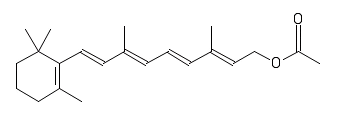
Illustration 4. Retinyl Acetate

Illustration 5. Retinyl Palmitate
RETIONATE ESTERE
This relatively new group of retinoids basically consists of Retinoic Acid, to which an alcohol is coupled, so that the ester bond, so to speak, faces the other way in relation to the Retinyl esters. Examples are Retinyl Retinoate (which also belongs to the group of Retinyl esters), which consists of Retinoic acid and Retinol linked together via an ester bond and Hydroxypinacolone Retinoate (often sold under the tradename Granactive Retinoid, which contains 10% Hydroxypinacolone Retinoate and the remaining 90% is solvent), which has been shown to be more stable than some of the other retinoids. However, many studies with this substance have not yet been performed.

Illustration 6. Retinyl Retinoate

Illustration 7. Hydroxypinacolone Retinoate
SOURCES:
Mukherjee, S. et. Al. Retinoids in the treatment of skin aging: an overview of clinical efficacy and safety. Clinical Interventions in Aging. 2006;1(4):327-348.
Rakusa Z. T. et. Al. Retinoid stability and degradation kinetics in commercial cosmetic products. Journal of Cosmetic Dermatology. 2020. 18. Nov.
Rasmussen H. H. & Andersen J. R., Vitaminer – A11. Dansk Selskab for Klinisk Ernæring. Revideret 16.04.2020. Lokaliseret den 4. Januar 2021 på https://pro.medicin.dk/Laegemiddelgrupper
/Grupper/36500
Scientific Committee on Consumer Safety, SCCS opinion on Vitamin A (Retinol, Retinyl Acetate, Retinyl Palmitate). European Commission, 2016. SCCS/1576/16
Scientific Committee on Consumer Safety, SCCS revision of the scientific Opinion (SCCS/1576/16) on Vitamin A (Retinol, Retinyl Acetate, Retinyl Palmitate). European Commission, 2022. SCCS/1639/21
Sorg O., Antilette C., Kaya G. & Saurat J. Retinoids in cosmeceuticals. Dermatologic Therapy 2006; 19:289-296.
Zasada M. & Budzisz E. Retinoids: Active molecules influencing skin structure formation in cosmetic and dermatological treatments. Postepy Dermatol Alergol. 2019;36(4):392-397.
